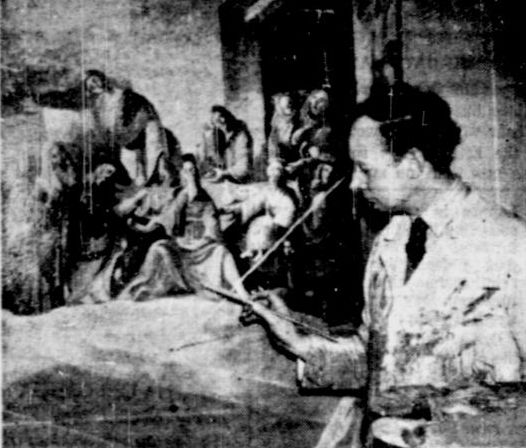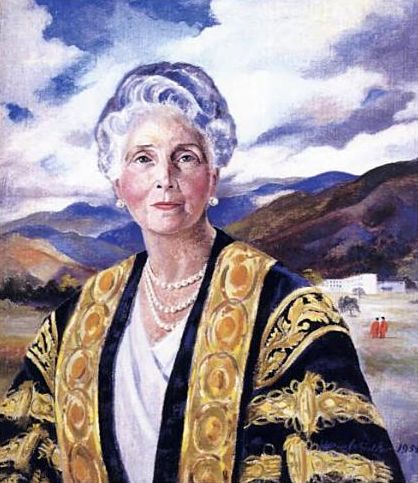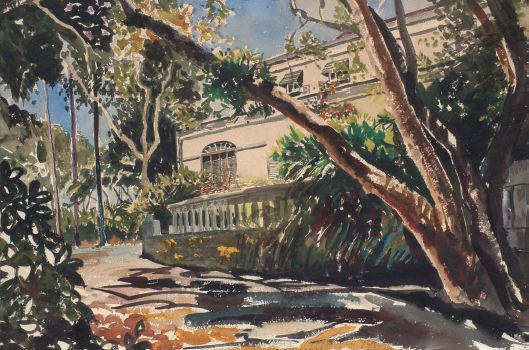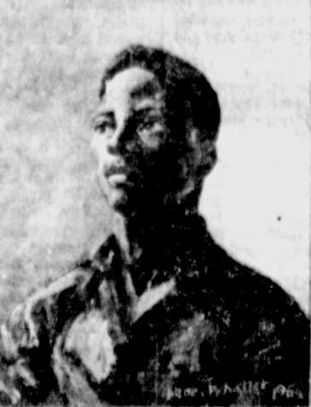
Hector Whistler, painting a mural at
Vauxhall Gardens, London
image from The
Miami News 16 March 1952 p9-B

H.R.H. Princess Alice, Countess of
Athlone by Hector Whistler (Oil on canvas, 1955)

"View of a Plantation House" by Hector
Whistler (Watercolour, 1962)
image from At Home in
the Island p13

"Blue Boy" by Hector Whistler
image from Meriden
Journal 11 September 1969 p16